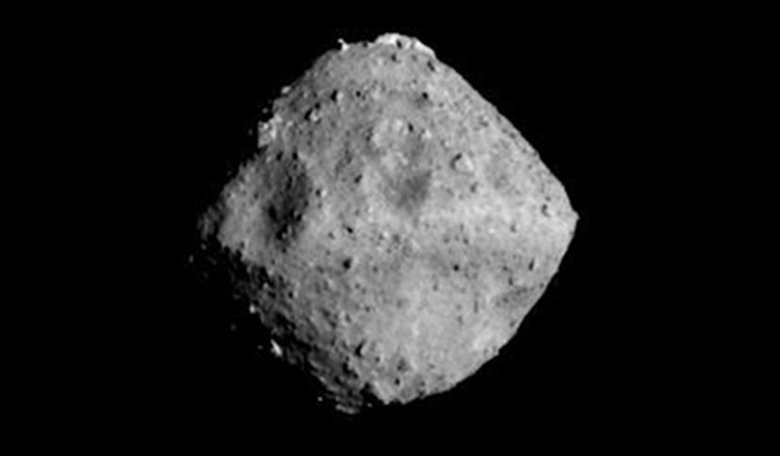Hayabusa2, Japan’s asteroid sample return mission has successfully settled into an observation position 20 kilometres (12 miles) above the Ryugu asteroid, after a three and half year journey to rendezvous with it’s intended target.
Ryugu first came to the attention of astronomers in May 1999, as it was spotted orbiting the Sun at a distance of 0.96 - 1.41 astronomical units (AU) once every 16 months.
The 900 metre-diameter, diamond shaped asteroid, whose name translates to Dragon’s Palace – a magical underwater palace in Japanese folktale – is composed mainly of carbon, meaning Ryugu is a 'C-type' asteroid.
C-Types are found most frequently at the outer edge of the asteroid belt and are the most common variety, forming around 75 percent of known asteroids. What makes up the remaining 25 percent is still unknown but with a current mining value speculated to be around $82.76 billion according to the Asterank website, a number of metals such as nickel, cobalt and magnetite are suggested to be present.
Clues to its make-up will be gathered from the multiple payloads carried aboard the space probe, which include a shoebox-sized lander called MASCOT (Mobile Asteroid Surface Scout) to help identify its chemical composition and a Small Carry-on Impactor (SCI) designed to blow a hole in the asteroid surface.
The explosion is to remove the asteroid’s weathered surface and expose fresh material within the excavated crater. Samples will then be collected and returned to Earth for further testing by the end of 2020.
A statement from the Japanese Aerospace Exploration Agency (JAXA) said: “From this point, we are planning to conduct exploratory activities in the vicinity of the asteroid, including scientific observation of asteroid Ryugu and surveying the asteroid for sample collection."
Aside from helping to establish its monetary worth as a potential future mining location, it is hoped that the asteroid material could provide clues as to how the Earth and the Solar System evolved.











